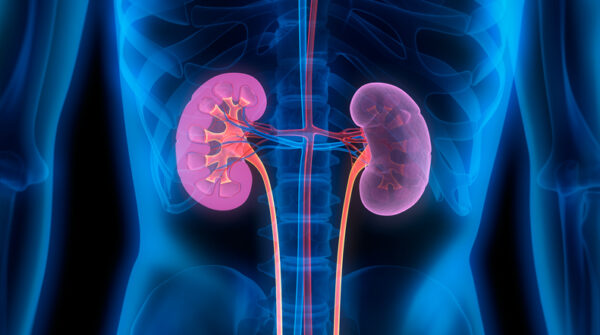
The blockbuster potential for new Novartis drug iptacopan rests on the molecule’s ability to reach many diseases. The drug is on the way to its first one, following a recent FDA approval in a rare blood disorder. Now Novartis has data in a different rare disease with no approved treatment options. The Swiss pharmaceutical giant says these results could support regulatory submissions in 2024.
While Novartis has said iptacopan could achieve peak sales topping $3 billion, the company has provided no breakdown of that projection by indication. The results announced Monday are from a Phase 3 test of iptacopan in C3 glomerulopathy (C3G), an ultra-rare kidney disease that leads to dysfunction of the glomeruli that filter waste from the blood. The disorder leads to inflammation and kidney damage that can progress to kidney failure. C3G stems from overactivation of a pathway of the complement system, a part of the immune system. Iptacopan is a small molecule designed to block a complement system protein called factor B.

With the Rise of AI, What IP Disputes in Healthcare Are Likely to Emerge?
Munck Wilson Mandala Partner Greg Howison shared his perspective on some of the legal ramifications around AI, IP, connected devices and the data they generate, in response to emailed questions.
The Phase 3 study was designed to evaluate more than 80 patients with C3G. The main goal was to show superiority compared to placebo by measuring proteinuria, proteins in the urine that are signs of disease. Novartis said the study met its primary endpoint, with iptacopan treatment leading to clinically meaningful and statistically significant proteinuria reduction at six months. Secondary goals included measuring kidney function.
The company said the drug’s safety was in line with earlier clinical trials. No specific figures from the results were disclosed, but Novartis said the data will be submitted for presentation at an upcoming medical meeting and discussed with global health authorities regarding potential regulatory submissions next year.
The preliminary results are from a test of iptacopan in adults. A separate cohort is enrolling adolescents with C3G.
“These positive results demonstrate the potential of iptacopan to provide clinically meaningful benefit in C3G and add to our growing body of evidence that supports its use across multiple complement-mediated diseases,” Shreeram Aradhye, president, development and chief medical officer of Novartis, said in a prepared statement.
Longer-Term Data Continue to Support Iptacopan in PNH
Iptacopan received its first FDA approval last week as a treatment for primary nocturnal hemoglobinuria (PNH), a rare blood disorder that leads the complement system to destroy red blood cells. Two blockbuster AstraZeneca drugs, Soliris and Ultomiris, are approved for treating PNH. But both medicines are infused therapies. Approval of iptacopan, branded as Fabhalta in the PNH indication, makes the drug the first oral therapy for the disease.
The FDA decision for Fabhalta in PNH was based on clinical trial data showing superiority over the AstraZeneca drugs at 24 weeks. Following this treatment period, study participants had the option to enter an extension study for another 24 weeks. Patients who initially received Fabhalta could continue taking that drug; those who had received one of the AstraZeneca drugs could switch to Fabhalta.
The 48-week data were presented over the weekend during the annual meeting of the American Society of Hematology in San Diego. In those who continued to receive Fabhalta, results at 48 weeks show near normal hemoglobin levels, continued avoidance of the blood transfusions used to treat PNH, and improvement in fatigue symptoms that are characteristic of the disorder. In study participants who switched to Fabhalta, similar efficacy results were reported.
Novartis said the drug’s safety profile at 48 weeks was unchanged from the 24-week data. In the extension study, three major adverse vascular events were deemed unrelated to treatment with Fabhalta. Six of the 62 patients who received Fabhalta continuously reportedly had clinical breakthrough hemolysis. One patient among those who switched to Fabhalta developed this complication. Novartis said all cases resolved without a need to change Fabhalta dosing. Fabhalta’s label has a black box warning that cautions clinicians and patients about the risk of serious bacterial infections. No such infections were reported in the extension study.
Iptacopan’s next indication could be the rare kidney disorder immunoglobulin A nephropathy (IgAN). While drugs from Calliditas Therapeutics and Travere Therapeutics have accelerated FDA approvals in this disease, there is still room for offering alternative and potentially superior treatment options. In October, Novartis reported preliminary results showing iptacopan met the main goal of a Phase 3 test in IgAN. The drugmaker said it planned to review the results with the FDA with the goal of submitting an application seeking accelerated approval in this indication in 2024.
Clinical development of iptacopan continues in other indications. The drug reached late-stage clinical development in another rare kidney disease called immune complex membranoproliferative glomerulonephritis. A Phase 3 test is also underway in atypical hemolytic uremic syndrome, a rare blood clotting disorder.
Photo: peterschreiber.media, Getty Images














